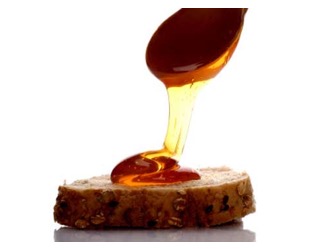Greek Honey
Honey-Based Recipes
Pancakes with cheese and honey
Ingredients:
• 2-3 eggs
• 2 1/2 glass of water
• 1/2 kg flour
• 1/2 kg feta cheese
• honey
• salt (if feta cheese is not salty)
• olive oil
Preparation:
Mix all the ingredients (except for the honey), adding the four little by little.
Blend everything and until the mixture becomes viscid.
You pan in boiling olive oil.
Add honey and serve it hot.
Chicken with strawberries and honey
Ingredients:
- 500 gr chicken breasts
- 5 strawberries
- 2 carrots
- 1 onion
- 4 colourful peppers
- 100 gr mushrooms
- 1/2 teacup soya
- 1 teacup tomato ketchup
- 1/2 teacup water
- 5 tablespoons balsamic vinegar
- 2 tablespoons honey
Preparation:
- Chop the carrots, the onion, the peppers and the mushrooms
- Fry the chicken for a while and add the vegetables
- Put away the pan from the heat and add the soya sauce
- Put the pan to heat again
- In a bowl mix the water well, the tomato ketchup and add it to the chicken
- Let it fry for 5 more mins
- Add the honey and the vinegar and fry for a few mins
- Serve with the chopped strawberries
Salad dressing
Ingredients:
- 1 teacup olive oil
- 1/2 teacup vinegar (from white wine)
- 1/2 teacup honey (about 3 spoons)
- 1 tablespoon lemon juice
- 2 tablespoons mustard
Chocolate cake with honey and almonds
Ingredients:
- 230 gr bitter chocolate
- 5 tablespoons honey
- 175 gr butter
- 30 gr finely chopped almonds
- 100 gr semi-mashed almonds
- 3 spoon flour
- 5 eggs
- 1/2 cups water
- 2 tablespoons almond liqueur or 3-2 drops of bitter almond essense
- powdered sugar for dusting
Preparation:
- Put the chocolate in a saucepan, add 3 tablespoons of water over low heat to melt, stirring constantly. Then add the honey and when mixed download the mixture from heat
- Preheat the oven to 180 degrees
- Add the butter cut into pieces into the chocolate mixture and stir until melted
- Add the mashed almonds, the flour and the baking powder
- Separate egg whites and yolks. Mix the egg yolks to the chocolate mixture and beat the egg whites into meringue
- Mix the meringue smoothly into the mixture, add the chopped almonds and finally flavour the mixture with the liqueur
- Use round cake pan and bake for approximately 1 hour
- Take the cake of the pan and let it cold
- Top with powdered sugar
- Serve it with fresh fruits and whipped cream
Honey Varieties in Greece
What is Honey?
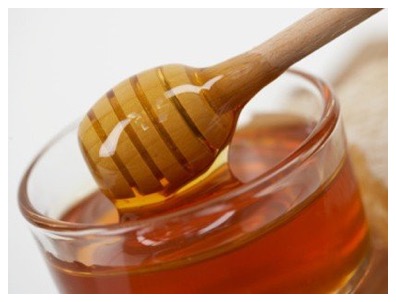
Honey contains:
• Glucose about 30.3%
• Fructose about 38.4%
• Minerals
• Organic Acids
• Enzymes and aminoacids
• Metals
• Vitamins B, C
• Polyphenols, Carotenoids, Vioflavonodi
Honey is the only nourishment that does not expire and is also a medicine for humans. It is said that Democritus owed his longevity to honey consumption. There are many different types of honey and the most important categories are:
• Flower honey, honeydew honey and their blends
• Polyfloral and monofloral honey
• Flower honey produced by the nectar of the flowers. Honeydew honey comes from insects’ secretions which bees collect from pine and fir trees.
Pine Honey

The main production areas of pine honey are the northern Euboea, Chalkidiki, Thassos, Skopelos, Zakynthos and Rhodes. Marchalina hellenica starts secretion from mid-August in large quantities and finishes next spring time. Bees mostly collect these secretions fro the production of pine honey from August to October.
Taste: Due to the low concentration of sugars is not too sweet.
Aroma: Particular. It is compared to the aroma of iodine.
Colour: The colour of pine honey is typical but darker than the thyme honey. Pine honey produced during the spring time is lighter and more clear than that produced in the Fall.
Crystallisation: Crystallization of pine honey is very slow, since the natural content of glucose is low. Pure pine honey remains fluid for more than one and a half year.
Nutritional value: Pine honey is of high nutritional value which is indicative of the high ash content. It also contains a large amount of different substances. Greek pine honey usually have great content of metals and minerals (calcium, magnesium, zinc, iron, copper, etc.).
Fir Honey

Taste: Fir honey is special for its really good taste.
Aroma: Not strong aroma.
Colour: Varies depending on the region of origin. Fir honeyfrom Vytina Arcadia stands out because of the creamy sheen created internally and is called "Vanilla fir." Generally, fir honey has bright colour in some areas and darker in others.
Crystallisation: Its low content of glucose helps it not to crystallize.
Nutritional value: It has high content in minerals (potassium, magnesium, phosphorus,iron, etc.). Contains vitamins in very small quantities, but even this small amount helps better absorb sugars from the human body.
Chestnut Honey
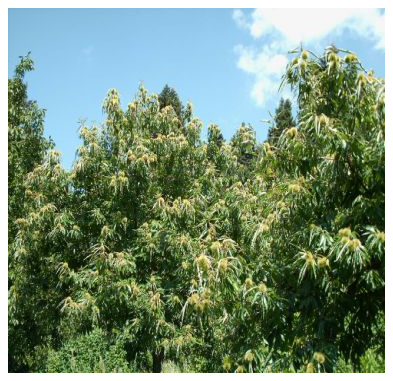
Taste: Strong, slightly bitter. The flavor of chestnut honey is so intense that a small proportion can overweigh the flavor of other honeys.
Aroma: Intense aroma.
Colour: Varies depending on its origin from light dark brown colour and sometimes reddish in the case of honeydew.
Crystallisation: Crystallises in grains after 1-2 years.
Nutritional value: Rich in trace elements. Has sweating properties, promotes the circulation of blood and has astringent and disinfectant properties of the urinary tract.
Citrus Fruit Honey
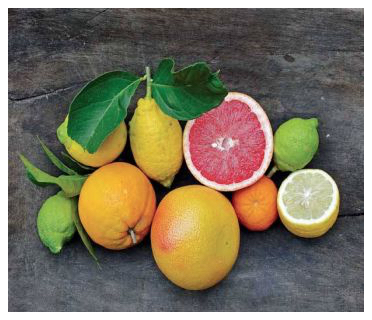
Taste: Extremely special taste.
Aroma: Intense, lovely scent.
Colour: Light yellow
Crystallisation: Crystallizes very quickly, so it recommended to be consumed in a short time.
Nutritional value: In order to maintain its nutritional value, this type of honey should be consumed in a short period of time and be kept in dark places, away from high temperatures.
Thyme Honey
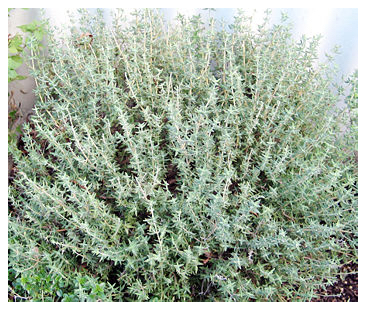
Taste: Thyme honey has a pleasant taste, but sometimes due to high concentration of fructose, leaves a burning sensation in the mouth.
Aroma: Intensely aromatic honey.
Colour: Usually has light amber colour. Thyme honey from Attica and the Cyclades usually has a lighter color, while thyme honey form Crete and the Dodecanese has dark orange color.
Crystallisation: This specific honey crystallizes in 6-18 months.
Nutritional value: Thyme honey is considered to have tonic and antiseptic properties and it is recommended for the prevention and fighting of infections of peptic and respiratory diseases. Thyme honey is rich in copper and boron.
Heather Honey
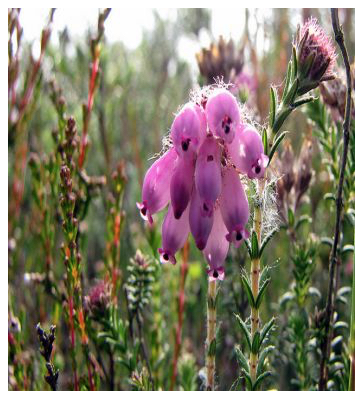
Taste: The spring heather honey is more palatable than the autumn heather honey but its special characteristic is the typical strong flavor.
Aroma: Characteristic, delicate aroma.
Colour: Autumn heather honey has dark reddish colour and spring heather honey has more light colour.
Crystallisation: Due to high natural content of glucose, heather honey crystallizes very quickly (within about 1-3 months) and therefore it is not suitable for blending with othertypes of honey for the creation of commercial types (blends). Heather honey sours more easily than other types of honey because of its high content of moisture and high amounts of Saccharomyces.
Nutritional value: Heather honey (especially the autumn) is considered to be a very nutritious honey, very tonic, for human body, it contains dozens of natural nutrients,vitamins, enzymes and amino acids, so it is mainly sold in health food stores.
Bee Products
Royal Jelly
Royal Jelly comes from the fact that the larvae intended to become queens, and adults queens, are exclusively fed with a large amount of this food. Royal Jelly contains the determining factor that converts a worker bee to a queen bee.
Chemical composition: The average chemical composition is 67% moisture, 12.5%, total fatty acids 5%, total sugars 1%, minerals (ash) 1% and 3.5% other unidentified ingredients, vitamins and minerals. Also some of the proportion comprised of various compounds such as 10-hydroxy-decenoic acid and pantothenic acid. Physical properties: The color of the royal jelly is important because it indicates the freshness and its suitability for consumption. Fresh royal jelly has a bright white color. When it is exposed to air or light its colour changes to light yellow and dark grey. This change is due to enzymes that oxidize some components of royal jelly and destroy it. Royal jelly has a light pungent smell and sour taste due to very low ph (3.5 to 4.5).
Nutritional value: The Royal jelly helps treatment of rheumatoid arthritis. Helps aged and tired body and is widely used in pediatrics as it helps children with anemia, pneumonia, bacterial infections etc. Improves general mood, increases work resistance, appetite and helps people gain greater mental and physical stamina. It is germicidal and antiseptic and helps women significantly in lactation after childbirth. Finally, it helps men to improve their sexual life.
Chemical composition: The average chemical composition is 67% moisture, 12.5%, total fatty acids 5%, total sugars 1%, minerals (ash) 1% and 3.5% other unidentified ingredients, vitamins and minerals. Also some of the proportion comprised of various compounds such as 10-hydroxy-decenoic acid and pantothenic acid. Physical properties: The color of the royal jelly is important because it indicates the freshness and its suitability for consumption. Fresh royal jelly has a bright white color. When it is exposed to air or light its colour changes to light yellow and dark grey. This change is due to enzymes that oxidize some components of royal jelly and destroy it. Royal jelly has a light pungent smell and sour taste due to very low ph (3.5 to 4.5).
Nutritional value: The Royal jelly helps treatment of rheumatoid arthritis. Helps aged and tired body and is widely used in pediatrics as it helps children with anemia, pneumonia, bacterial infections etc. Improves general mood, increases work resistance, appetite and helps people gain greater mental and physical stamina. It is germicidal and antiseptic and helps women significantly in lactation after childbirth. Finally, it helps men to improve their sexual life.
Pollen
Pollen is collected by bees from various flowers. Pollen is the richest natural food containing proteins, vitamins, essential amino acids, hormones, enzymes and other useful ingredients for our diet.
Chemical composition: The average chemical composition is 25.7% protein, 4.8% lipids, 27% carbohydrates, minerals (ash) 3.1%, water 30%, vitamins and minerals.
Nutritional value: Pollen helps in mental health, strengthens heart contraction and is diuretic. Improves appetite and thus it is highly recommended in cases of weakness and poor metabolism, intestinal disorders, neurasthenia, psychosis and memory loss. Pollen is rich in cystine, an amino acid that affects hair growth and hair color. Additionally, has beneficial effect on the prostate. Also, it helps relieve and reduce the symptoms of menopause.
Chemical composition: The average chemical composition is 25.7% protein, 4.8% lipids, 27% carbohydrates, minerals (ash) 3.1%, water 30%, vitamins and minerals.
Nutritional value: Pollen helps in mental health, strengthens heart contraction and is diuretic. Improves appetite and thus it is highly recommended in cases of weakness and poor metabolism, intestinal disorders, neurasthenia, psychosis and memory loss. Pollen is rich in cystine, an amino acid that affects hair growth and hair color. Additionally, has beneficial effect on the prostate. Also, it helps relieve and reduce the symptoms of menopause.
Propolis
Propolis is a substance of resins and gums that bees collect from the buds of trees, enrich it with wax, pollen, enzymes and other substances and use it to seal up and disinfect the inside of the their nest. Every time a bee gets off a cell they cover it with propolis.
Chemical Composition: Propolis contains resins and balsams 55%, 30% wax, 10% essential oils, 5% pollen, flavonoids and phenolic compounds.
Physical properties: Propolis differs from cell to cell due to vegetation and the color varies from red to yellow and black. Propolis is insoluble in water and soluble in alcohol. At temperatures over 25º C is soft, flexible and adheres to hands, while at temperatures below 15º C is hard and brittle.
Nutritional value: Propolis has bactericidal and bacteriostatic properties. It is used to heal trauma of the respiratory organs, the oral cavity and other areas of the human body. Due to its large content of flavonols it has antiseptic and antibacterial action. Propolis also inhibits the gathering of erythrocytes, protects vitamin C from oxidation and finally, improves blood circulation in the capillary vessels. It is used against fungal infections and otorhinolaryngological problems and against peptic ulcer and prostate problems.
Chemical Composition: Propolis contains resins and balsams 55%, 30% wax, 10% essential oils, 5% pollen, flavonoids and phenolic compounds.
Physical properties: Propolis differs from cell to cell due to vegetation and the color varies from red to yellow and black. Propolis is insoluble in water and soluble in alcohol. At temperatures over 25º C is soft, flexible and adheres to hands, while at temperatures below 15º C is hard and brittle.
Nutritional value: Propolis has bactericidal and bacteriostatic properties. It is used to heal trauma of the respiratory organs, the oral cavity and other areas of the human body. Due to its large content of flavonols it has antiseptic and antibacterial action. Propolis also inhibits the gathering of erythrocytes, protects vitamin C from oxidation and finally, improves blood circulation in the capillary vessels. It is used against fungal infections and otorhinolaryngological problems and against peptic ulcer and prostate problems.
Honey and Health
Benefits of Honey
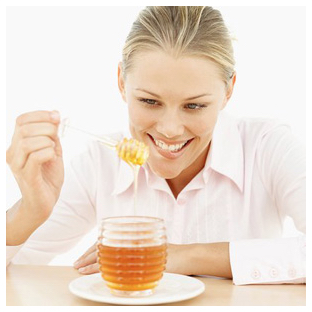
The benefits of honey bears on humans are summarized in the following:
• Reduces the harmful effects of chemotherapy in cancer patients
• Improves oral health
• Is a Healthy food preservative
• Strengthens antioxidant system
• Improves athletic performance
A thorough study of the most recent scientific research shows that honey can procrastinate the oxidation of various food, especially meat, for several days, making it a food preservative of high quality. Additionally, honey was shown to contain similar amounts of antioxidant ingredients as fruits, so it is an essential ingredient against harmful free radicals in our body. Honey protects us from cancer, heart disease, while it is one of thefoods that fights ageing.
Regarding physical performance, scientific studies have shown that consuming honey directly provides us with carbohydrates, which improves our resistance, as carbohydrate drinks or gels that are widely used during various sport activities. Moreover, the consumption of honey in combination with a protein supplement after exercise, helps to faster transport of the protein in the muscle groups, resulting in better muscle restoration. The daily consumption of a small amount of honey helps to maintain stable blood glucose values . Antioxidants and some other ingredients of honey also seem to have antibacterial action, that is why honey helps fighting against peptic ulcers, infections and inflammation.
In conclusion, honey is a sweetener with significant advantages compared to sugar, thus, we have to include it in our diet. Use honey as much as possible and reduce daily sugar consumption.
Source: www.iatronet.gr
Healing Properties Of Honey
Antibacterial activity: honey has healing properties. Is antiseptic and germicide because of its hydrogen peroxide content, the acidity and high concentration of sugar. It helps
wounds healing, stops blood on the wounds and trauma and provides sterility. Its antibiotic and alkaline properties help to disinfect the mouth and prevents dental caries.
Metabolism: Honey fights obesity caused by defective metabolism, hyperinsulinism and water retention in tissues.
Heart-Circulatory: Constant consumption of honey by people suffering from heart disorders, has resulted in the improvement of their situation. Honey sugars, particularly glucose, is necessary for the contractions of heart muscle and also give heart the necessary energy. Sugar and acetylcholine contribute in blood vessels dilation and lower blood pressure.
Anemia: The consumption of honey increases the percentage of hemoglobin, particularly in children, mainly due to the iron and copper content.
Stomach and intestine diseases: Honey has great mineral salts content and reduces acidity in stomach. Additionally, honey helps treatment of peptic ulcer and duodenum. Finally, honey is considered as one of the best natural light laxatives.
Liver: The glucose in honey completes the reserves of glycogen in liver. The liver is body's “factory” where useful substances for human body are produced and harmful substances such as toxins are decomposed. The presence of glycogen enhances liver’s work and increases body's resistance to infections.
Kidney: Honey contains very little protein and almost no salt, substances forbidden to people who suffer from kidney diseases. Besides honey, is a hypertonic glucose solution, thus strengthens and enhances the body. It is also diuretic.
Finally, honey due to its high fructose content, in combination with enzymes, restores sobriety to drunk people, especially if dissolved in lemon juice.
Source: www.diet-net.gr

What is Apiculture?
Apiculture is the management and study of honeybees.
Apiculture is the management and study of honeybees.
Apiculture is derived from the honeybee's Latin name Apis mellifera, meaning ‘honey gatherer’. Since bees do not collect honey but nectar from which honey is made, the scientific name should actually be Apis mellifica meaning ‘honey maker’.
Although apiculture refers to the honeybee, the vital role all bees play in the pollination of crops and flowering plants has caused apiculture to also include the management and study of non-Apis bees such as bumblebees and leafcutter bees.
Some 90 million years ago, flowering plants first appeared on earth. The wasp-like ancestors of bees took advantage of the food made available by flowers and began to modify their diet and physical characteristics.
Since then, flowering plants and bees co-evolved. This eventually led to a complete interdependence, meaning that flowering plants and bees cannot live and reproduce without each other.
Since then, flowering plants and bees co-evolved. This eventually led to a complete interdependence, meaning that flowering plants and bees cannot live and reproduce without each other.
The genus Apis is comprised of a comparatively small number of species including the western honeybee Apis mellifera, the eastern honeybee Apis cerana, the giant bee Apis dorsata, and the small honeybee Apis florea.
Honeybees are indigenous to the Eurasian and African continents and were introduced to the Americas and Australia by European settlers.
The western honeybee is comprised of some 24 races or sub-species. The African honeybee, sometimes referred to as ‘Killer bee’, is a race of the western honeybee and can therefore cross-breed.
Bees collect pollen and nectar. Pollen is the protein source needed for bee brood development while nectar is the carbohydrate source providing energy.
Nectar is a sugar solution produced by flowers containing about 80% water and 20% sugars. Foraging bees store the nectar in the ‘honey sac’ where the enzyme invertase will change complex sugars into simple sugars called mono-saccharides. Upon return to the hive, the foraging bee will disgorge the partially converted nectar solution and offer it to other bees. Housekeeping bees will complete the enzymatic conversion, further removing water until the honey solution contains between 14 – 20% water.
Honey is too dry for any microbes to live in. Honey is non-perishable and can be kept indefinitely in a cool, dry place.
The flavor, aroma and color of honey is determined by the floral source. For example, buckwheat honey is almost black while fireweed honey is almost colorless.
Unlike other bees, honeybees can communicate details about the location, quality and quantity of food sources. This allows honeybees to access and utilize food sources efficiently at great distances.
Honeybees maintain temperatures in the brood nest of between 30º C and 34º C, even in the middle of winter.
The honeybee colony is comprised of one queen, thousands of worker bees and a few hundred male bees called drones. Colony size varies according to season and condition of the colony.
Several diseases including viruses, various microbes and mites can affect the honeybee.
Honeybees are used in pollination and play a critical role in the production of many crops, representing a value of over $14 billion per year in North America.







